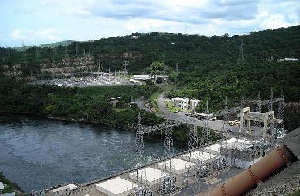The country’s main power producer, Volta River Authority (VRA), strongly advised government to shut down VALCO about two years ago as the mainstay of a cocktail of solutions to prevent the country from plunging into deep energy crisis -- an advice the Energy Ministry ignored, leading to the current power crisis that threatens economic growth and national security, B&FT has gathered.
The VRA in a 27-slide presentation made to the Energy Ministry advised that the shutdown of the aluminum smelter, which is still in operation and currently consuming about 70 megawatts of electricity daily, could have saved the country from over-running its hydro generation facilities.
Currently, the country sheds between 400 and 450 megawatts of power daily, and the energy producers believethe shutdown of VALCO’s energy consumption, which at full capacity is about 120 megawatts -- equivalent to the total load shed in Eastern, Central and Upper East Regions combined -- would have mitigated the impact of the crisis and saved about US$192million in 2014 by avoiding US32 cents of generation plus 100 MW of emergency generation.
Documents available to the B&FT reveal that the then-Ministry of Energy and Petroleum knew about all the threats of the load-shedding and the possible solutions to address any shortfall in power generation, but did nothing to prevent the current crisis.
In the document submitted to the Ministry on October 18, 2013 titled “Meeting 2014--2016 Supply Requirements” by the VRA, the largest power producer called for a halt in the operations of heavy power user VALCO to mitigate the impact ofthe imminent power rationing.
“Over the next three years hydro sustainability poses a risk to reliable power supply, and prudent reservoir management could mean 1,250 GWh of deficits in 2014. Reservoir risk assessment indicates that the decisions of 2014 have the greatest impact on the risk of going below 240 feet in 2015 or 2016,” the document said.
The document presented four main options for hydro generation for 2014 to avert the current on-going crisis, which from all indications was not considered.
Option one, according to the report, was to generate 5,300 GWh of hydro power best case scenario, but requiring about 1,250 of load shedding or 179MW of additional capacity in 2014.
The second option was the generation of 5,300GWh of hydro power plus the shutdown of heavy power consumer VALCO, but requires about 100MW load-shedding of additional generation.
The third option presented to the ministry was generation of 6,000GWh or 6,100GWh that required VALCO’s shutdown last year. This however, would have prevented the likelihood of Akosombo reservoir failure this year.
The final option was the generation of 6,700 GWh hydro-power. This option, the report noted, “requires no load shedding in 2014, but reservoir failure is very likely in 2015 and 5% more risky than Option two.”
“It would therefore be a cheaper option to go for an approach that would not involve the need to deploy any emergency generation. It is recommended that Option two, the VALCO shutdown, should be seriously considered as a compromise, and it would not be as risky as generating 6,700 GWh in 2014.”
The Valco shutdown from 2014, the report noted, could have saved 600 GWh of power that could be spread to cover a large number of consumers.
B&FT gathered that despite this insight, no concrete action was taken to pause the operations of VALCO to mitigate the imminent impact of a power rationing programme.
Current generation-shortfall occasioned by poor rainfall into the Akosombo and Bui reservoirs for hydro power generation, and challenges with some thermal plants, has meant a generation-shortfall of between 350 and 600 megawatts.
The situation has led to implementation an electricity rationing programme by the electricity distributor, the Electricity Company of Ghana, to the dismay of industries and households.
The estimated demand was growing, and current projections indicate that the country’s requirements for electricity will hit 2,764.2MW this year.
For a country using under 2,000 megawatts of electricity currently, Ghana ought to be bringing on-stream 200 megawatts of new capacity every year. This additional capacity requires US$200million of annual investment.
The Akosombo Hydro Generating Station, the largest hydro installation in the country, generates 1,020megawatts of power. Each of the installation’s six turbines generates 170MW of electricity. The shutting down of the two units months back meant a shortfall of 340MW from Akosombo Generating station alone.
The Kpong Hydro Generating Station, which generates 160 MW from four installed units, has minimal storage capacity and is therefore operated in tandem with Akosombo as a run-of-the-river plant to optimise water use from the Volta Lake.
The minimum operating water level for the Akosombo Dam is pegged at 240 feet. However, the water inflow into the lake has recorded consistent reduction in year-end inflow since 2010.
Business News of Thursday, 9 April 2015
Source: B&FT

















